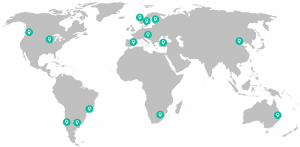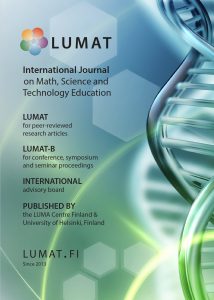”We run the journal on a small budget within our own working hours, and pretty much outside of working hours as well. The Editori offers us a little relief from the workload, for example by outsourcing maintenance”, says Johannes Pernaa, university lecture at the University of Helsinki. In this interview, Pernaa tells how LUMAT, one of the leading journal in its field, moved to the Editori publishing platform. He also talks about the daily life of running a scientific journal, from editorial work to marketing.
(Tämä artikkeli on saatavilla myös suomeksi.)
 The Think Open blog article series presents journals published on the University of Helsinki’s Editori platform. The interviewees are journal editors, who talk about open access publishing in general, as well as the uses of the Editori publishing tool provided by the library.
The Think Open blog article series presents journals published on the University of Helsinki’s Editori platform. The interviewees are journal editors, who talk about open access publishing in general, as well as the uses of the Editori publishing tool provided by the library.
In the second part of the series, Johannes Pernaa (TUHAT, ORCID, @johannespernaa) university lecturer at the Department of Chemistry at the University of Helsinki and the managing editor of LUMAT journal tells about the journal that is focused on themes related in the teaching of mathematics, science and technology.
What kind of journal is LUMAT?
Johannes Pernaa: ”LUMAT: International Journal on Math, Science and Technology Education, was founded in 2013, and in 2015 it was divided into LUMAT A and LUMAT B. The journal has traditionally been a Nordic forum for young researchers in the field, although LUMAT also publishes international research as its name implies. Over the past two years, the journal has also received international attention, and it gets more and more manuscripts from around the world.”

”The journal publishes research related to the teaching of mathematics, science and technology, and has established itself as the top Nordic journal in the field, achieving a Jufo 1 publication rating in 2017. The authors of the journals are researchers in the field, readers of the journal also includes teachers. The journal uses a double-blind peer review. The journal has an international advisory board that supports the development of the publication.”

”Information about the journal is disseminated through social media (Facebook, Twitter, LinkedIn; Google Ads: 50 euros / month). Event marketing is done at conferences. The journal contents is extensively indexed (DOAJ, Scopus, Google Scholar, ERIC, Index Copernicus), article-level metrics are tracked using Altmerics. In addition, the journal’s editorial staff and authors distribute content on their own channels.”
”Special issues are published 1–2 times a year. Then we have our own symposium every year. We also design fan products: we already have a t-shirt and it has a cult reputation – the entire product range is built on top of it.”
We also design fan products: we already have a t-shirt and it has a cult reputation – the entire product range is built on top of it.
Why did you choose the Editori platform?
JP: ”We run the journal on a small budget within our own working hours, and pretty much outside of working hours as well. The Editori offers us a little relief from the workload, for example by outsourcing maintenance. Thus, the managing manager does not have to perform technical maintenance, which previously took about 100 man-hours per year. We had no specific expectations for the platform, OJS (Open Journal Systems) was familiar to us already.”
What kind of tool is Editori for journal editors?
JP: ”OJS is a tool we are already familiar with, and we use it at every stage of the publishing process. If someone offers us support in producing an HTML article from Word or pdf, it would be warmly welcomed – we have not enough money or time to do it. The journal has an annual budget of 5000 euros: Adobe CC (500 euros), DOIs (500 euros), Google Ads (600 euros), prints etc. (200 euros), layout (1700 euros), events (1500 euros).”
OJS is a tool we are already familiar with, and we use it at every stage of the publishing process.
What tips would you have for those journal editors who are planning to become Editori users?
JP: ”Study the basic tutorials of OJS. Recruit a couple hundred referees. The quality of the peer review and the speed of the whole process determine the progress of the journal. Editors need to be really active – if the peer review is late, then you even have to call the reviewer to find out what is going on.”
Articles published in the Editori Stories:
